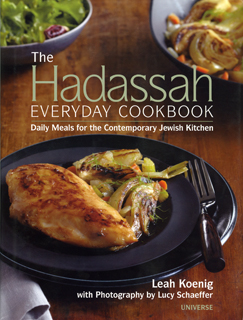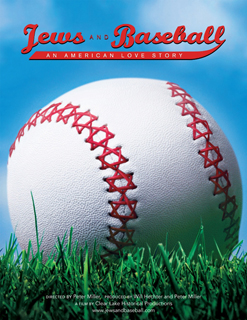A Film Unfinished
Permanent link.jpg)
This Sunday, May 1, join Birthright Israel NEXT and JUF's Young Leadership Division with support from the Holocaust Remembrance Committee and the United States Holocaust Memorial Museum for a very special Yom Hashoah screening of award winning documentary “A Film Unfinished.” Estelle Laughlin, a volunteer with the United States Holocaust Memorial Museum, will share her account of living in the Warsaw Ghetto, followed by a screening of the film in which Israeli filmmaker Yael Hersonski exposes a long missing film reel from the Warsaw Ghetto— unmasking new dimensions of the Nazi propaganda effort.
Estelle was just 10 years old, living in Warsaw, when the war broke out.
“My family was a middle class family—holidays and friends and just a normal life where I felt secure and loved and, then of course, Warsaw was the center of my universe,” she said. “And then when the war broke out my world, my peaceful street turned into hell.”
Estelle, whose father was one of the organizers of the Warsaw ghetto uprising, reflected on the bravery and tenacity of the resistance fighters.
“I want to emphasize the heroism that the Jewish people in the ghetto mastered and I think that it probably reflects the fact that Jewish people were in ghettos and were persecuted throughout history, but they’ve always managed to create their own culture…that ability to create our own culture under the worst of circumstances…this is our savior. That it’s not a miracle that we survive.”
In the Warsaw Ghetto, Estelle and her family hid to escape the deportations.
“It’s astounding to think that between July 1942, which was my 13th birthday, when the deportations started and Sept. 1942, 99 percent of the Jewish children in the ghetto were sent away never to be seen again. I was among the one percent of the children who have survived.”
Estelle’s family was taken to Majdanek, an extermination camp, where she, her sister and her mother survived—her father was sent to the gas chamber. The three women were later sent to two different labor camps and were liberated from the Czetochowa camp in January of 1945. To escape pogroms in Poland following the war, they moved to Bavaria in August of 1945 and eventually moved to the United States. She now lives in Chicago.
Today, Estelle volunteers at the U.S. Holocaust Memorial Museum. She speaks about her experiences during the Holocaust not to reflect on “the curse of darkness of the past” but rather “to illuminate the future.” She discusses her story further in her memoir— set to be released next year by Texas Tech University Press.
At Sunday’s event, Estelle wants to emphasize that which gave her the strength to survive.
“I am marveling at the child that I was through the eyes of an old person. Where did I find the resources to survive with love for humanity, with compassion, with reverence for life?” she said. “I think that the compensation for reliving that pain [is] the reward to recognize that the young people, that children are wise,” she said. “That they know the difference between right and wrong, that they make choices and that there is a goodness in all of us.”
This year, in honor of Yom Hashoah, Estelle has the following message for Jewish young adults: “I would like to pass on that in memory of those who lived and died and paid the highest price to live by their values, to understand, to remember that the purpose of remembering all of that is to touch and hold on to the best that is in us so that civilization can progress. That it is not to curse the darkness of the past, it’s to understand and make the future brighter for everyone in this world. That we are all one family.”
Chicago: A Film Unfinished: A Yom HaShoah Screening and Reception
The evening begins at 5:30 pm in the Gene Siskel Film Center café and gallery, 164 North State St, where appetizers will be served. The program will begin at 7 pm with Estelle Laughlin, a volunteer with the United States Holocaust Memorial Museum, sharing her account of living in the Warsaw Ghetto, followed by a screening of the film.







.jpg)



